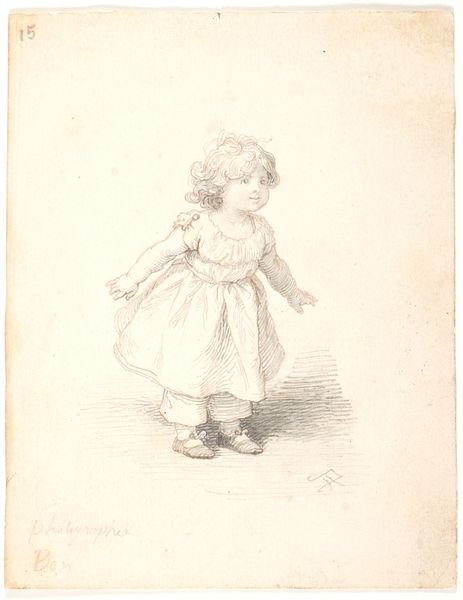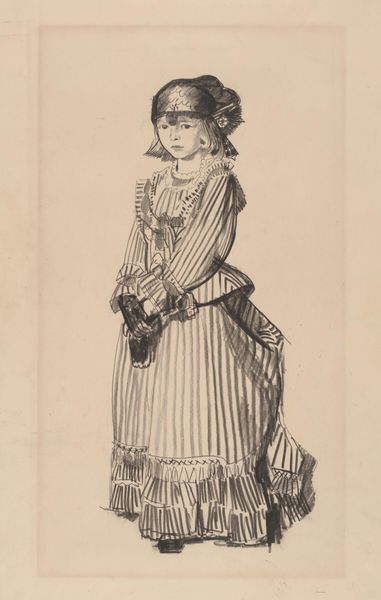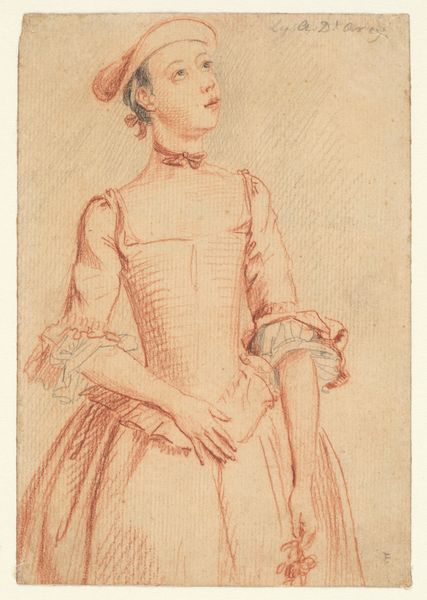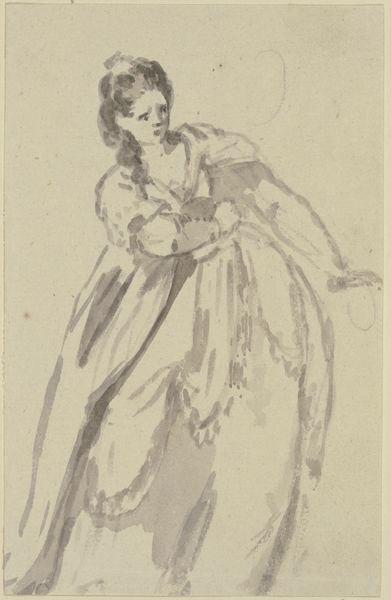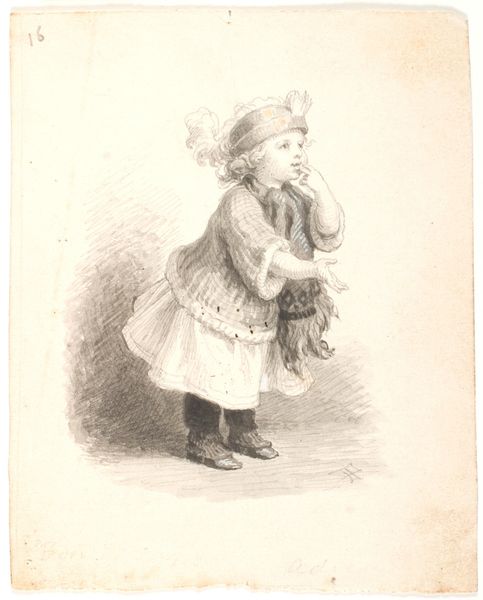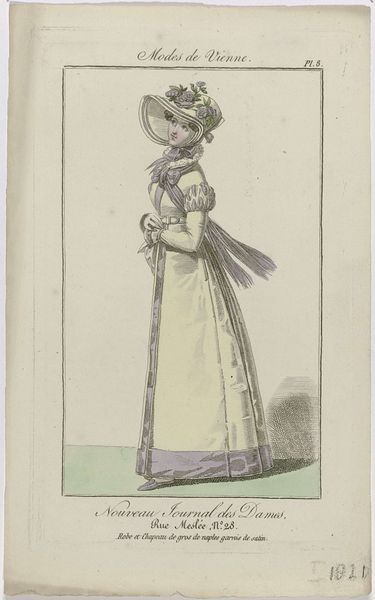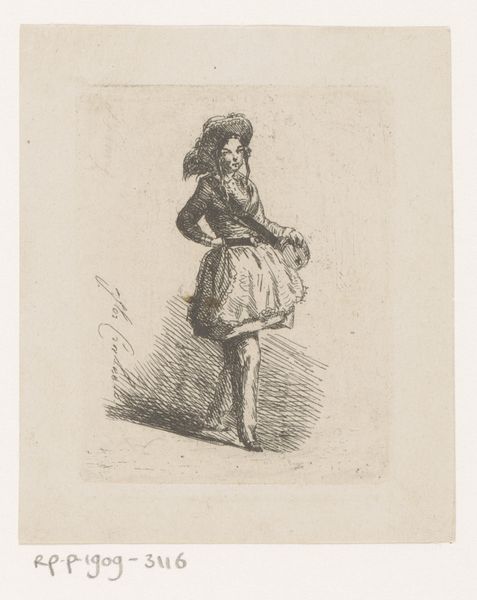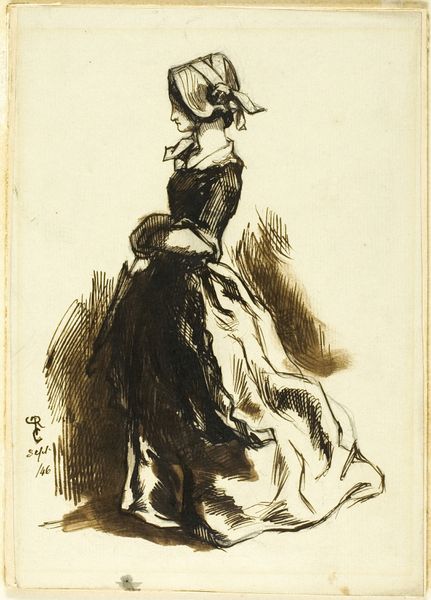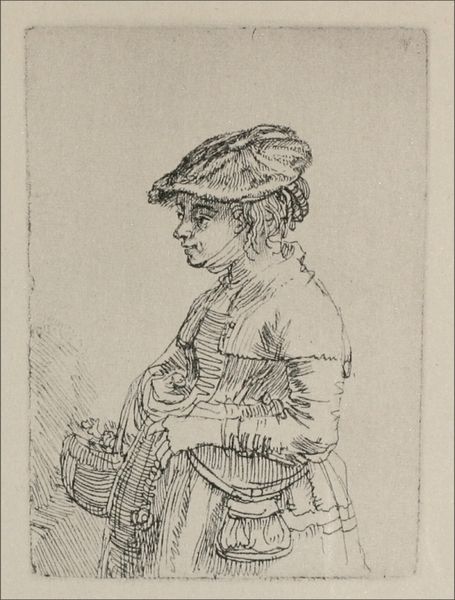
drawing, pencil
#
portrait
#
drawing
#
figuration
#
pencil
#
realism
Dimensions: 6-1/16 x 4-9/16 in. (15.4 x 11.6 cm)
Copyright: Public Domain
This pencil drawing of a little girl was made by Félicien Rops in 1873, and is now in the Metropolitan Museum. The most striking element is the child's pose. Her arms are crossed, leaning on a surface, a gesture that speaks to defiance or world-weariness. We see echoes of this stance across centuries. Think of royal portraits, where crossed arms signify power and control. Yet, here, on a child, the pose is unsettling. It suggests a premature loss of innocence, a burden carried too early. Consider the historical context: the late 19th century, a time of rapid industrialization and social upheaval, a time of growing artistic interest in childhood. This innocent-looking drawing becomes imbued with deeper meaning, reflecting anxieties about a changing world. Perhaps, subconsciously, Rops captured a collective fear: the loss of innocence, the weight of the future on young shoulders. The simple sketch taps into something profound. The gesture is repeated, a symbol passed down, evolving.
Comments
No comments
Be the first to comment and join the conversation on the ultimate creative platform.
